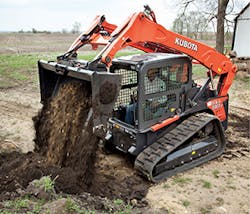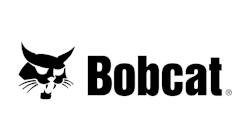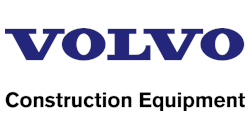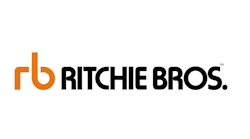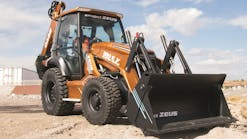Editor’s note: This article first appeared in the January/February 2016 issue of Grading and Excavation Contractor.
The skid-steer and the compact track loader (CTL): two powerful little workhorses designed to perform the same basic functions—so what’s the difference? Hint: the difference is based on the working conditions each is best suited for.
“It all comes down to wheels versus tracks,” sums up Ashby Graham, product manager for JCB.
“Skid-steers are tired machines, whereas CTLs sit on a tracked undercarriage similar to a dozer,” elaborates Warren Anderson, brand marketing manager for CASE Construction Equipment.
Skid-steers give the operator greater traction and maneuverability on paved surfaces, continues Anderson. They also have faster top travel speeds. “CTLs provide an incredibly stable platform. The primary advantage is lower ground pressure and stable operation over uneven or sensitive surfaces [because] the tracks provide more contact with the ground than four independent tires.”
That’s the main difference, agrees Gregg Warfel, district sales manager for Terex Construction Americas, who says it’s important to assess the site conditions where the loader will be working. “The type of surface the machine will be working on significantly impacts the productivity and cycle times of the loader. When working in soft underfoot conditions, a loader with tracks will be more effective. When working on harder surfaces, a wheeled loader is better suited.”
A key distinction between an skid-steer loader (SSL) and a CTL is the difference in ground pressure that machine delivers, notes Brent Coffey, product manager of loaders for Wacker Neuson. “Although CTLs are typically heavier than SSLs, they have less ground pressure, making [them] ideal for soft or muddy ground. On the other hand, an SSL has a higher travel speed and because of the tires, is best suited [for] operating on harder surfaces.”
Besides the obvious difference of tires on skid-steer loaders and tracks on compact track loaders, the drive system and components differentiate the two machines. “Most SSL machines are driven with a hydraulic motor that is positioned near the center of the machine. They utilize a chain-drive system to turn the wheels,” explains Jorge De Hoyos, Kubota senior product manager, SSLs and skid-steer verticals. “Most track loaders have a hydraulic-drive motor with a sprocket on it to drive the track. There are additional rollers and idlers that make up the undercarriage system of a CTL machine.”
Other differences include size and operator location. Andrew Schuermann, product manager of trenchers and compact utility equipment for Ditch Witch, describes SSLs as 35 horsepower and up “ride-in loader” machines on tires, and CTLs as 20–37 horsepower “stand-on” units on tracks. “They handle the same way, use the same attachments on the front, and perform a lot of the same functions,” he explains, “but the choice boils down to the job.”
Application: the Deciding Factor
The basics of the machines are the same. “Both machines operate similarly,” observes Schuermann. “Maneuverability is similar.” So how do you decide?
“Buy based on what 90% of your jobs are,” advises JCB’s Graham.
It is important for the owner to properly match the type of loader to his or her most common applications in order to get the best performance and productivity out of it, says Christopher Girodat, marketing manager for Bobcat Co. “Each type of loader has benefits.”
Because skid-steer and compact track loaders use the same attachments (buckets, dozer blades, mulchers, augers, trenchers, levelers, box rakes, snow blowers) and perform in the same applications (construction, landscaping, rental, forestry, agricultural), Warfel says the type of surface an operator will be working on significantly impacts productivity and cycle times.
“Normally, a CTL is used on soft-surface job sites with varied terrain that require more traction than the SSL can deliver,” explains De Hoyos. The SSL is a faster and more nimble machine on hard surfaces, but it tears up the ground. A CTL offers more control on soft, steep surfaces.
However, he adds, “if an operator is going to be working on a hard surface such as concrete or asphalt frequently, then a track loader machine may not be the best choice. Frequent turns on a rough surface such as asphalt or concrete will increase track wear and lead to replacement of tracks more quickly than when operating on softer surfaces such as dirt.”
Skid-Steers
It is generally acknowledged that SSLs perform best on firm ground conditions, such as rock, asphalt, and concrete, notes Warfel.
In addition to working on jobs where hard surfaces predominate, Neuson’s Coffey says SSLs are also ideal for jobs that require longer travel distances, such as road construction and snow removal, probably because they are more stable and provide smoother operation with less bouncing.
“Many customers use their CTLs and skid-steers on the same job site because of their variety of attachments and ability to fit into tight places,” says De Hoyos. However, he adds, because of their tires, SSLs are great for hard surface projects like road building and jobs in urban environments. CTLs are best suited for outdoor projects with slopes and slippery terrain like those in rural and undeveloped areas. Kubota’s skid-steers, the SSV65 and SSV75, are the company’s first entry into the market. Features include an overhead front door, new multi-function handles for high-flow machines, a side light feature, and optional high-flow hydraulics.
Skid-steers are popular in heavy-duty and industrial environments such as demolition, road and bridge projects, and commercial construction, due to their durable tires, adds Anderson. “Any project that involves excessive work on rock, asphalt, and concrete is ideal for a skid-steer loader.”
Skid-steers are more suitable for hard surfaces because tires are more durable than tracks, adds Michael Knoblett, program manager for Yanmar Co. Ltd. Simply put, because a wheeled machine imposes more ground pressure, use it in solid conditions where you’re not tearing up the ground: applications such as demolition, asphalt, concrete, or hard ground that permanently wear out track.
On hard ground conditions, a SSL can complete a job at reduced cost when compared with a CTL, says Terex’s Warfel. Putting a CTL on a demolition project, such as breaking up concrete to access underground utilities under a sidewalk or driveway, could cost a customer up to 25% more per hour of usage over a skid-steer loader because of excessive track wear in this type of environment.
Skid-steers have increased mobility and wear advantages on paved surfaces such as streets, sidewalks, trails, parking lots, or driveways, adds Bobcat’s Girodat. “[They] work well in a variety of construction applications, especially concrete and asphalt-related tasks, because they can easily turn and maneuver in close quarters and they can complement work done by larger machines.”
SSLs can turn within their own length, he continues, which allows them to easily turn and maneuver in close quarters where other earthmoving machines generally can’t. “Skid-steers excel on construction sites because they can effectively maneuver around the job site and maintain optimal productivity. Applications such as excavating, grading, and site preparation are common for skid-steer loaders.”
As Gregg Zupancic, product marketing manager for skid-steers and CTLs at John Deere, points out, they are more maneuverable because they have less rubber on the ground. They have higher ground pressure—averaging 30–40 pounds of pressure per square inch—than the CTL. “They’re lighter, faster at top speed, narrower, and shorter. They’re nimble and have a tighter turning radius. The CTL is heavier and wider. With its undercarriage, there’s a lot of rubber touching the ground; it’s better for grip, not speed.”
According to Anderson, because they are nimble, SSLs are better suited to applications “where tight turning is going to be taking place.”
Compact Track Loaders
Although the CTL can also “spin on a dime,” as Schuermann puts it, its real advantage is the ability to “float” on ground with low traction conditions.
CTLs are built to handle wet, soft, snowy, sensitive, and muddy ground conditions, such as those found in more undeveloped areas and on slopes, says Warfel. “These loaders distribute the machine’s weight evenly over the length and width of the tracks, allowing them to ‘float’ over uneven terrain. This flotation results in lower ground pressure, more traction, and better performance on sloppy surfaces.”
CTLs distribute their weight evenly over the length and width of the tracks, so they’re able to handle uneven terrain more efficiently, expounds Anderson. “The advantage of the CASE dozer-style undercarriage is that it holds very well on side slopes. For example, they’re perfect for maintenance around riverbanks or lakes.”
A CTL also provides a certain advantage over a skid-steer loader in grading applications because it can maintain the position of its bucket or blade over varying terrain. CTLs are also well-suited to lifting with forks because there is no front tire compression, creating a better platform for lifting. This gives the operator greater confidence.
Because weight is evenly distributed, a track machine has low ground pressure (4–5 psi) and more traction in wet conditions, where wheels have no traction. “CTLs are more efficient in muddy, soft conditions and are ideal for working on grass, dirt, or loose gravel due to the decreased amount of wear to the tracks,” says Anderson.
Thanks to lower ground pressure, the wide-track and rubber track CTLs can operate in almost any conditions, any season, 365 days a year—a revenue-producing asset. They also preserve profit by reducing the amount of ground repair needed at the end of a job because their increased ground clearance, low ground pressure, and rubber track undercarriage minimize damage to lawns and landscapes.
Less lawn disturbance makes them ideal for residential and landscape applications, but Schuermann points out that they are also preferred in confined spaces when moving a small pile of dirt. “They maneuver in tight spaces and provide superior visibility of the job site, the machine, and the space behind you. That’s a huge advantage.”
Compact track loaders excel when working in dirt, from land clearing and site preparation to utility construction, as well as pavement and concrete construction and restoration, indicates Girodat. “The undercarriage and length of the track on the ground allows the machine to move heavier loads or palletized materials onsofter ground with ease. The loaders feature an impressive rated operating capacity, low ground pressure, increased ground clearance, and optimum traction, which are ideal for construction tasks.”
CTLs are also efficient for trenching applications because they produce minimal rutting, smooth movement and low ground pressure. Furthermore, dedicated rubber tracks, available in a variety of widths and tread types, provide increased digging traction and pushing performance. “When other equipment slows or shuts down due to weather, compact track loaders keep working,” explains Girodat. “This can add weeks to a customer’s work schedule in spring and fall, and keep crews working when they would otherwise be shut down.”
Another money-saving asset is Bobcat’s internal steel cables that minimize track tensioning because they don’t stretch, allowing operators to stay on the job longer.
Cost Comparison
The CTL may extend working hours, but it costs more to own and operate. Zupancic estimates that a CTL costs $10,000–$15,000 more than a skid-steer, and that track is twice the cost of tires.
“Initial investment for a CTL machine is generally higher than a comparably-sized SSL machine, and repair costs can be higher as well,” reiterates De Hoyos. “However, the total cost of ownership should be carefully considered by the buyer, as CTLs do extend the work season since they can work in wet ground conditions where skid-steers cannot.”
Estimates range from Anderson’s 15–20% to Coffey’s 30% more for a CTL than a skid-steer, with both acknowledging that compact track loaders have higher maintenance costs. “However, the CTL allows operators to perform jobs that the SSL otherwise would not be capable of doing,” assesses Coffey.
The added cost of ownership is due in part to the fact that the CTL burns two times more fuel per hour, because it’s heavier and pushes more. That creates fatigue, which leads to more maintenance, such as greasing bushings, ensuring proper tension of the track, and maintenance of the undercarriage.
A track-drive system can be more costly to purchase and maintain, due to additional components for the undercarriage and cost of the tracks themselves. Tires are less expensive to fix than track. “The undercarriage for track loaders is more complicated and requires more parts than a skid-steer,” emphasizes Knoblett. “Tracks and rollers are more expensive to produce than tires and wheels.”
The undercarriage is the most costly part of any tracked machine, adds Warfel. “It can make up almost 20% of the machine’s purchase price and nearly 50% of its maintenance cost.” That’s why it’s so important to keep the undercarriage clean.
Keep it clean and free of rocks, recommends Graham. At least once at the end of the day operators should clean mud and debris such as rock and gravel out the machine’s undercarriage to minimize unnecessary track wear. Look at the components regularly and replace them roughly every third track replacement—based on wear, not hours.
Bobcat introduced an optional fully-enclosed Roller Suspension system for CTLs that reduces track maintenance, mentions Girodat. It features forged steel rollers that do not chunk out like rubber can. They are permanently sealed and lubricated with synthetic oil, requiring no routine maintenance.
A Kubota SVL90 moving dirt
With the exception of the track and undercarriage, the two machines contain the same basic components, such as similar engines, hydraulic systems, and grease points. Therefore, Schuermann says preventive maintenance costs are “very comparable,” although he observes that because access to maintenance points may be different, labor costs could vary. The engine of a CTL resides in the front, with a large hood for easy access, he points out.
Nevertheless, repair costs for the CTL can run high because there are more wear parts (rollers, idlers, drive sprocket, etc.) on the undercarriage, explains De Hoyos. However, as Girodat points out, rubber tracks typically last longer than tires, which helps equalize maintenance costs. Additionally, Warfel believes that a typical CTL can pay for itself in approximately 18 months, covering its maintenance costs.
Value for Dollar
Purchase price and cost of operation are part of the overall cost of ownership picture, but resale value can also be a factor. While Zupancic sees a trend of CTLs being popular in coastal areas and with sandy, soft soil, and skid-steers enjoying more popularity in the Midwest and dry areas, he realizes that what drives the trend is return on investment.
Ditch Witch dealers claim the CTL holds its value extremely well, says Schuermann. “They’re so reliable—
customers rarely trade them in. If they are traded in, they’re usually sold before they hit the dealer lot.”
On average, Deere customers keep their machines three years or 3,000 hours, thanks to good financing and extended warranties, says Zupancic. “A customer buys it new and gets a half-life out of it; then another customer buys it used and gets another half-life.”
Some JCB customers trade in their loaders, but Graham says many “run them until they fall apart.” She says SSLs and CTLs generally have the same resale value if taken care of properly.
“There’s not much difference in resale value,” concurs Deere’s Zupancic, who says the value is directly related to each machine’s condition and is typically application-specific. “How was it worked? Was it used in a corrosive or rocky environment?”
Compact track loaders may hold their value better than skid-steers due to their undercarriage being built more robustly, but it may also be due to the fact that the market for CTLs is increasing, so there’s more of a demand, believes Anderson.
Determining whether a machine has held value depends on the type of application, ground conditions, and maintenance, adds Girodat. “Grading and excavation contractors will get more value out of their loader when its power and lifting capacity is matched to the application. The same goes for the ground conditions. If a contractor needs to work on paved surfaces, such as streets, sidewalks, parking lots, driveways, or hard-surfaced yards, a skid-steer loader will hold more value. Knowing what work will be performed, having a good understanding of the ground and weather conditions each type of loader will succeed in, and calculating the overall machine costs are all factors when determining which machine will have the greatest value to grading and excavation contractors.”
Although some manufacturers claim rubber tracks dramatically lose life when used on concrete or gravel terrains, Warfel says Terex CTLs have a much longer track life than SSLs in most all conditions. “Calculating residual value entails many factors, including hours on [the] machine, condition, financing.”
Skill
Condition often relates directly to the operator. Although both machines function similarly and require comparable skill sets and an understanding of machine controls, there are a few differences that training can overcome. Operators of both machines should read their owner’s manual, be aware of these slight differences, and take it easy at first.
Many operators run their compact track loaders as if they are skid-steers by doing a lot of counter-rotating and spinning the tires to get the bucket filled to maximum capacity. But CTLs have enough traction that the tracks do not need to spin to fill the bucket. If the tracks are spinning while the machine is still, the loader’s track life will be greatly reduced, warns Warfel. “When an operator counter-rotates with a CTL, especially in loose underfoot conditions, a lot of material is ingested into the undercarriage. Three-point turns, rather than spinning or counter-rotating, will save on undercarriage wear.” This reduces the track wear as well as the chances of de-tracking. It also minimizes ground disturbance.
Anderson encourages wider, more gradual turns in order to save the life of the costly tracks. He also recommends working up and down on slopes to minimize wear on idlers and rollers. When working on an incline, avoid sudden changes in direction, move slowly, and carry loads low to maximize machine stability.
“Operators should also alternate turning direction so that one side does not wear out faster than the other, and avoid track spinning and excessive travel in reverse when possible, as these activities can increase wear,” says Anderson.
CTLs tend to have hand controls, while SSL machines can come with hand and foot controls, points out De Hoyos. “The balance of a CTL is typically around 60/40 [rear/front], and on most SSL machines it is around 70/30. Kubota’s new skid-steers, however, have 66/34 ratio, which promotes slightly better stability than most other brands.”
It’s not so much skill as it is an understanding of what is best for the machine, points out Coffey. For example, operators should be mindful of sharp edges that could damage the tracks. They should also make sure that both tracks are fully supported by the ground and work piles from the sides-to-the-middle to reduce the amount of material that can get into the tracks.
Sometimes it’s a matter of what’s best for the operator instead. As Knoblett explains, “Skid-steer loaders have a tendency to be rougher on the operator and may bounce around the job site more, if not operated smoothly.”
On the Job
“Everyone in grading uses track,” states Graham. At least 70% of grading customers buy a CTL, estimates Zupancic, because they cut a deeper grade, push more, get the job done in fewer passes, and work in wet and muddy conditions.
Their popularity reaches back about 15 years, recalls Girodat. “They offer the same level of reliability, durability, ease of maintenance, and maneuverability as skid-steer loaders.”
They continue to be popular, at rental stores, the manufacturers’ showroom, and beyond. “They are the equipment borrowed the most often by Ditch Witch employees on the weekends,” confesses Schuermann. “They’re very useful and easy to transport. They provide good visibility.”
Weekend warriors rent both machines frequently, says Graham, although she notices that typically there are more wheeled machines than track in rental. “They’re a popular rental machine because they’re small, easy to transport without a CDL [commercial driver’s license], and can get into tight/small spaces.”
The narrow profile of the machines allows operators to gain access to tight, space-restricted job sites like fenced-in backyards, declares Warfel. “These loaders are also extremely stable on steep or uneven ground and have excellent traction in many types of ground conditions. Both types of loaders are hard to beat for grading work.”
Because they’re built to handle extreme temperatures, both types of loaders can remain productive year-round, he adds. “These loaders offer increased maneuverability when working in confined, snow-packed areas compared to pickup trucks equipped with a snow blade or larger loaders.”
Not only are they replacing pickups in certain applications, but they are also taking on jobs once reserved for backhoes. “The market is trending to larger chassis with more capacity,” says Graham.
“Skid-steers used to be smaller machines, but they’re adaptable. They can do it all.” And because they can, they are replacing some of the bigger, dedicated machines. “Forestry wants a CTL. They don’t want a dedicated machine that sits most of the time. CTLs are smaller, more versatile, and easier to transport.” Both skid-steers and CTLs can fit into urban spaces where it’s harder to get big machines.
“What size machine do you need?” is one of the first questions Schuermann poses to customers in order to determine the best machine to match their needs. His second is: Do you want to stand or sit?
“Stand-on sales are growing,” he pronounces. For jobs during which an operator needs to step on and off quickly, perhaps to make adjustments or shift a load, a stand-on model is more efficient than a ride-in model.
Efficiency is a factor in the decision. So is safety. “Ditch Witch has one of the highest and largest platforms for stable footing and a better vantage point,” says Schuermann. “Visibility is key.”
Whatever a contractor’s specific needs are, Graham anticipates they’ll need new machines as business and the economy grow. In addition to determining costs, applications, and other considerations to be weighed in the decision-making process, she points out that JCB machines are Tier IV Final without aftertreatment. “There’s no SCR system, no DEF, no recycle time. Nothing is required by the operator. That makes them more productive.” In the end, productivity is what these two compact machines are all about.


